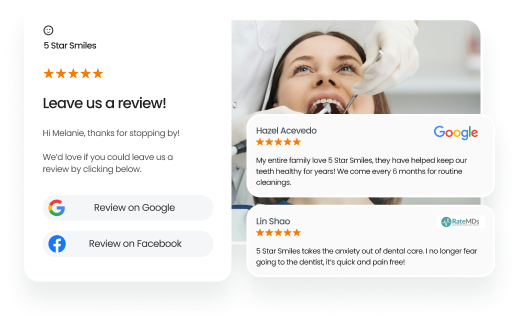Today, customers not only remember what they bought but also how they felt along the way. That feeling before, during, and long after a purchase. At a time when customer expectations are higher than ever, customer experience transformation is what helps businesses stand out.
It’s about creating experiences that feel effortless, personal, and connected throughout the customer journey.
Not long ago, delivering good service meant replying to emails and resolving complaints quickly. But in 2025, customers expect more. They don’t just buy products—they buy ease, speed, and empathy. They choose brands based on how the experience makes them feel from start to finish.
Customers now expect fast answers, smooth handoffs between teams, and personalization at every touchpoint. If that experience isn’t consistently excellent, or your systems can’t keep up, they’ll choose a competitor that can.
That’s why more businesses are investing in CX transformation. It’s not about adding one new tool or automating a few responses. It’s about reimagining how every customer messaging happens—from the moment someone finds you on Google to the follow-up email that turns a sale into a relationship.
💡Your north star for transformation
Customer experience transformation isn’t about doing more—it’s about doing what matters, better. When every touchpoint feels connected, personal, and effortless, customers stick around—not because they have to, but because they want to. In this blog, let’s explore what real customer experience transformation looks like—and why it takes a completely different mindset today than it did just a few years ago.
Table of contents
- What is customer experience transformation?
- 5 signs your business needs customer experience transformation
- How to build your customer experience transformation roadmap
- Birdeye GenAI tools that fuel customer experience transformation
- Hughston Clinic transformed patient experience with Birdeye
- FAQs about customer experience transformation
- Birdeye helps ease the customer experience transformation
What is customer experience transformation?
Customer experience transformation is the process of aligning your operations, people, and technology to create consistent, personalized, and valuable customer communication. It’s about reshaping how your brand is experienced—from discovery to purchase to advocacy—by focusing on what today’s customers actually need and expect.
It goes beyond optimizing surface-level pain points. A true customer experience transformation framework doesn’t just fix broken moments—it rewires your systems to support a long-term, customer-centric culture.
That means breaking silos between departments, ensuring your data flows freely, and empowering your team to act on real-time customer feedback.
This isn’t a trend—it’s a response to how dramatically customer behavior and expectations have changed.
Why customer experience transformation in 2025 looks nothing like it used to
Just a few years ago, updating your support flow or running a satisfaction survey was considered forward-thinking. But in 2025, leading brands are doing something much more foundational: they’re investing in digital transformation of customer experience initiatives that connect every step of the customer journey.
Why? Because the way people experience your brand has changed.
And there’s data that proves it’s working.
👉 According to Birdeye’s 2025 State of Online Reviews:
- Review volume surged 13% in just one year
- 73% of businesses now respond to reviews, up from 63% in 2023
These numbers reflect a new reality: today’s customers are more vocal and selective. They expect faster responses, smarter service, and an effortless brand experience across every channel.
That’s why more companies are committing to full-scale digital transformation of customer experience efforts that connect people, platforms, and workflows across the entire customer journey.
Whether a customer contacts your team via chat, email, or a local business listing, they expect a seamless service, shared context, and tailored responses every time.
This is where digital customer experience transformation becomes a competitive advantage. By using unified platforms, real-time customer data, and machine learning to predict needs and personalize outreach, you can create intuitive journeys and deliver results that scale.
Pro tip: Want to turn disconnected channels into a cohesive journey? A well-built customer experience strategy focuses on building deep customer insights, not just tracking touchpoints.
Customer Experience Transformation: Tools, Tactics, and Trends
Want to see the impact of Birdeye on your business? Watch the Free Demo Now.
5 signs your business needs customer experience transformation
Even the best-run businesses can miss the mark when it comes to customer experience. Maybe your Net Promoter Score (NPS) has plateaued. Maybe your reviews are inconsistent across locations. Or maybe your customers are happy, but they’re not sticking around.
If any of these signs sound familiar, it might be time to rethink your approach and commit to a serious experience transformation.
1. Reviews are inconsistent across channels or locations
If one store or provider is thriving while another struggles with bad reviews or low engagement, it’s often a systems issue, not a people issue. Without unified processes, customer interaction quality varies, leading to fragmented experiences and confused brand perception.
2. Your team is reacting instead of anticipating
If your service team is always putting out fires, that’s a red flag. Without predictive analytics or centralized customer data, it’s hard to spot issues early or deliver proactive support. Transformation gives you tools to anticipate customer needs instead of waiting for complaints.
3. Feedback is hard to collect—or harder to act on
If your team struggles to gather or make sense of customer feedback, it’s a sign your tech stack isn’t working together. Without clear insights, there’s no way to adapt to evolving customer preferences or understand changing customer behavior.
Black Bear Diner recognized this problem as they expanded to 150+ locations. Review volume was climbing fast, but feedback management was scattered across teams.
After adopting Birdeye, they unified responses, streamlined reporting, and tapped into location-specific trends using machine learning and sentiment analysis, keeping their 4-star average intact across dozens of new diners.
4. No shared vision across departments
If your CX feels disconnected, your teams probably are too. When marketing, operations, and customer service don’t share the same goals or tools, it leads to broken handoffs and disjointed experiences.
A strong customer experience transformation framework builds a shared vision across different departments, making it easier to design customer journeys that feel intentional, not accidental.
5. Your retention is flat, despite strong acquisition
Bringing in new customers is only half the battle. If they don’t stay, something in the experience isn’t working. A strong CX approach helps increase customer loyalty and ultimately drives higher customer lifetime value by delivering moments that matter, not just transactions.
Customer issues aren’t always visible—but they’re often solvable with the right tools, visibility, and mindset. And once you recognize the signals, the next step is clear: start building a roadmap that transforms intent into action.
How to build your customer experience transformation roadmap
Once you recognize the need for customer experience transformation, the next step is to create a roadmap that aligns your strategy, systems, and teams around a clear vision. But transformation doesn’t happen through isolated efforts—it requires cross-functional clarity, sustained leadership, and a clear path forward.
Below are five essential steps to build a transformation roadmap that turns good intentions into business success.
1. Align your teams with a shared CX vision
Start by defining what an exceptional experience looks like for your brand. This includes aligning your company’s vision with your customer needs, and ensuring every department—from support to marketing to ops—shares that CX vision.
This foundational clarity fosters a collaborative environment where priorities are understood, not assumed. It also lays the groundwork for team collaboration, creating faster handoffs and fewer silos.
2. Audit your current journey and systems
You can’t transform what you don’t understand. Begin with a complete audit of your customer journey, including every digital and physical touchpoint.
- Identify where customers drop off, where delays happen, and where internal processes fall short.
- Review your existing systems, workflows, and technical infrastructure.
Use this audit to surface both pain points and opportunities, especially those that impact customer satisfaction and customer engagement.
3. Build the right tech foundation for scale
A strong digital transformation in customer experience isn’t about flashy tools—it’s about choosing the right infrastructure. Your platform should connect customer data, enable real-time action, and work across all digital channels.
This is where platforms like Birdeye come in, offering AI-powered tools, automated review management, and centralized dashboards that help teams move faster and make smarter decisions.
Pro tip: Prioritize systems with centralized dashboards, strong integrations, and the flexibility to support continuous improvement.
4. Empower your teams with insights and training
Technology only works when people use it well. Equip your teams with the ability to read data, interpret patterns, and act with confidence.
Train frontline staff to spot signals in customer feedback, use tools to proactively offer solutions, and implement customer marketing best practices. This investment supports a positive service culture and increases the impact of transformation from the ground up.
When your employees are empowered, they’re better able to engage customers and deliver seamless service before problems escalate.
5. Launch, optimize, and repeat
Customer experience transformation isn’t a one-time project—it’s a loop. Once you launch your CX upgrades, track what’s working. Share wins internally. Monitor key signals like review volume, time to response, and customer satisfaction trends.
Refine your approach based on real outcomes, not just assumptions. Whether it’s redesigning workflows, retraining teams, or adjusting how you generate review, transformation thrives on new processes and ongoing improvement.
Customer experience transformation is as much about mindset as it is about method. A clear, structured roadmap ensures your brand delivers experiences that scale and keep pace with what customers expect next.
Birdeye GenAI tools that fuel customer experience transformation
While strategy builds the foundation, the right tools bring customer experience transformation to life. Birdeye’s AI tools are built for multi-location businesses, designed to simplify complexity and enable brands to deliver on rising customer expectations—at scale.
Here’s how Birdeye’s comprehensive platform helps you transform not just what your team does but also how your customers feel at every step of the customer journey.
Reviews AI: Turn customer voices into business growth
Birdeye Reviews AI helps you generate more reviews, monitor 200+ review sites, and respond with personalized, AI-drafted replies—faster than ever. With multilingual capabilities, automation, and performance benchmarking, your teams can scale their efforts without sacrificing authenticity.
It also uncovers actionable insights and themes from sentiment analysis to improve operations and ensure satisfied customers.
Social AI: Scale your social presence with local precision
Creating fresh content for every location doesn’t have to be chaotic. With Social AI, you can bulk-generate engaging posts tailored to each region, schedule them in advance, and monitor performance across digital channels.
It helps you stay on-brand, locally relevant, and responsive, without burning out your social team.
🌟 Feature highlight: Post libraries, competitor benchmarking, and AI-powered best-time-to-post recommendations.
Surveys AI: Get deeper insights with less friction
Modern CX isn’t complete without direct customer feedback, and Survey AI makes it easy to collect, analyze, and act on it.
From sentiment score to custom pulse surveys, Birdeye helps you understand customer needs and surface meaningful interactions that influence loyalty and retention.
🌟 Bonus: Use AI summaries to spot emerging patterns instantly and route negative feedback to resolution workflows.
Insights AI: Make smarter decisions, faster
Insights AI gives you a complete view of your brand’s health through Birdeye Score, Sentiment Score, and Reputation Score. From monitoring machine learning-based sentiment trends to generating AI-backed recommendations for improvement, this tool supports better business processes and faster optimization.
🌟 Tip: Use location benchmarking to maintain consistency across teams and drive continuous improvement.
Listings AI: Be found everywhere your customers are
An accurate online presence is key to discoverability. Listings AI helps ensure your business is up-to-date across Google, Apple, Facebook, and 50+ directories.
You get insights into your Google Business Profile performance, keyword ranking, and data synchronization—all supported by AI-generated suggestions to boost local SEO and visibility.
Competitors AI: Know exactly where you stand
Birdeye’s Competitors AI helps you identify local competitors, analyze their reviews and social behavior, and compare performance head-to-head.
It offers predictive analytics and smart benchmarking tools to help you stay one step ahead while building strategies rooted in real, local insights.
With all these tools working together, Birdeye enables brands to deliver personalized experiences, automate without losing empathy, and foster brand loyalty at scale. It’s not just about tech—it’s about redefining customer experience across every moment that matters.
Hughston Clinic transformed patient experience with Birdeye
When it comes to healthcare, patients aren’t just looking for treatment—they want clarity, empathy, and fast communication. However, with multiple clinics and decentralized workflows, keeping the customer experience consistent can be difficult.
That’s exactly where Hughston Clinic found itself. While their medical care was top-notch, their digital reputation and feedback loop weren’t keeping up with rising customer expectations. They lacked visibility, struggled to respond quickly, and couldn’t accurately predict customer behavior across clinics.
The challenge
Hughston’s fragmented systems left gaps in their ability to gather insights or monitor what mattered most. Different clinics operated with different tools. As a result, the organizational culture lacked shared feedback visibility and alignment around service goals.
What they needed wasn’t just another tech platform—it was a transformation of their business model, powered by the right technical capabilities and grounded in patient understanding.
The solution
Hughston chose Birdeye’s GenAI suite as an excellent starting point to unify their reputation, feedback, and insights. They used:
- Reviews AI to generate reviews and respond instantly with empathetic, AI-assisted replies.
- Survey AI to collect in-the-moment feedback and surface themes using AI summaries.
- Insights AI to benchmark performance and offer real-time, location-specific recommendations.
- Listings AI to ensure accurate Google Business Profiles and boost local visibility.
This wasn’t just automation—it was a set of building blocks to modernize how they listened to patients, improved systems, and trained employees to act on feedback in real time.
The result
📊 113% growth in online reviews within the first 90 days
⭐ Improved online rating across locations
🔍 Increased local search visibility by optimizing listings
More importantly, they created a CX loop that helped teams foster loyalty by making customers feel valued through faster responses and personalized care.
These tools didn’t just improve efficiency—they unlocked real business benefits by attracting more new customers, building trust, and improving patient satisfaction.
FAQs about customer experience transformation
It’s the process of redesigning your systems, tools, and team workflows to deliver consistent, personalized experiences that meet rising customer expectations across all touchpoints.
Most businesses see early results within 60–90 days, but a complete transformation typically unfolds over 6–12 months, depending on your size, goals, and ability to adapt systems and processes.
Yes. With the right tools and CX strategy, even smaller brands can compete by improving discoverability, strengthening reviews, and delivering seamless, personalized customer journeys.
Yes. With the right tools and CX strategy, even smaller brands can compete by improving discoverability, strengthening reviews, and delivering seamless, personalized customer journeys.
Birdeye helps ease the customer experience transformation
At Birdeye, we believe that customer experience transformation isn’t just a project—it’s a growth engine. Whether you’re an enterprise, a restaurant chain, or a regional service brand, Birdeye gives you the building blocks to connect with customers, respond at scale, and improve faster.
Birdeye GenAI tools work across every stage of the customer journey—from discovery to post-purchase feedback—so you can understand customer needs, automate smartly, and deliver personalized experiences without losing the human touch.
With Birdeye, you can:
- Monitor, request, and respond to reviews in real time
- Benchmark performance across locations
- Use survey campaigns to unlock unique insights and foster loyalty
- Scale content and messaging across digital channels
- Track sentiment trends to inform your CX strategy
Whether you’re just starting or ready to level up, Birdeye is your partner in delivering exceptional experiences that drive loyalty, trust, and sustainable growth.

Originally published









